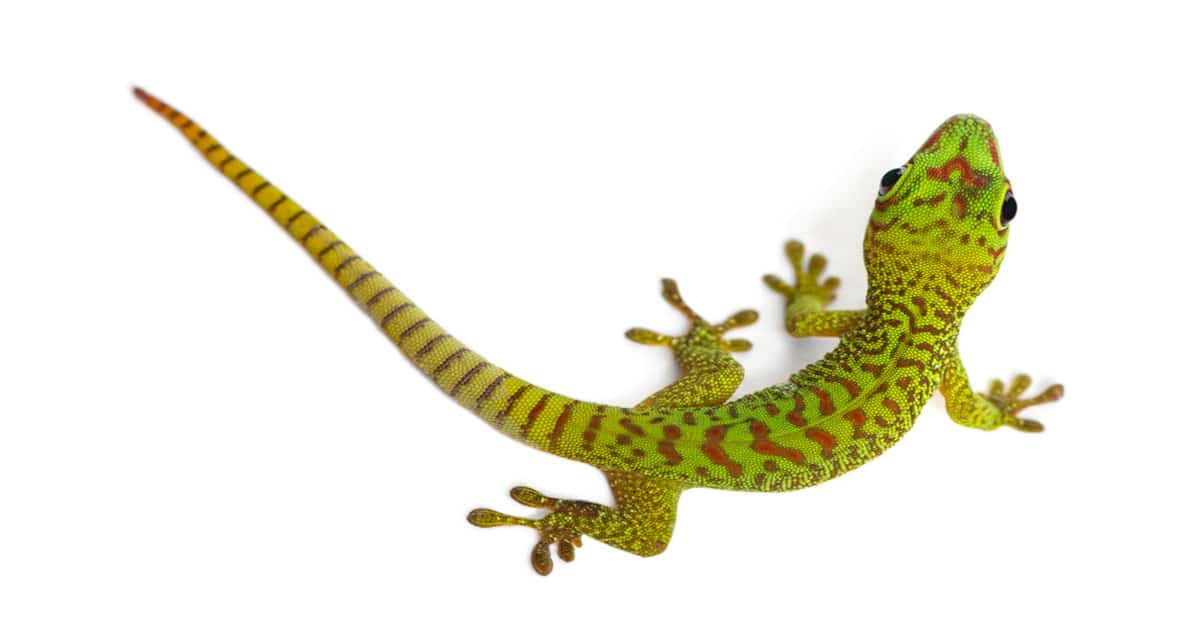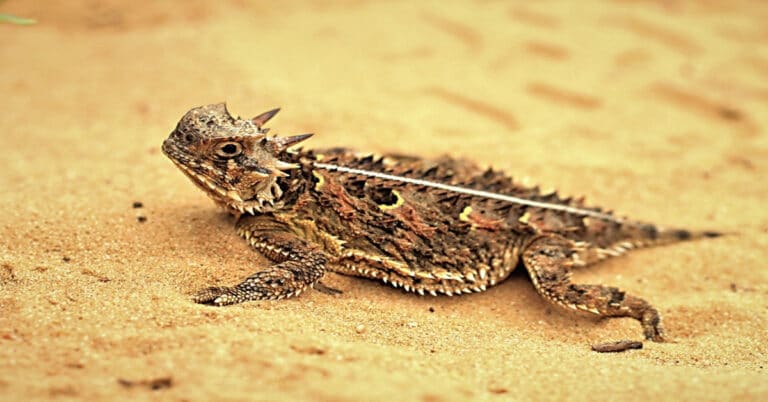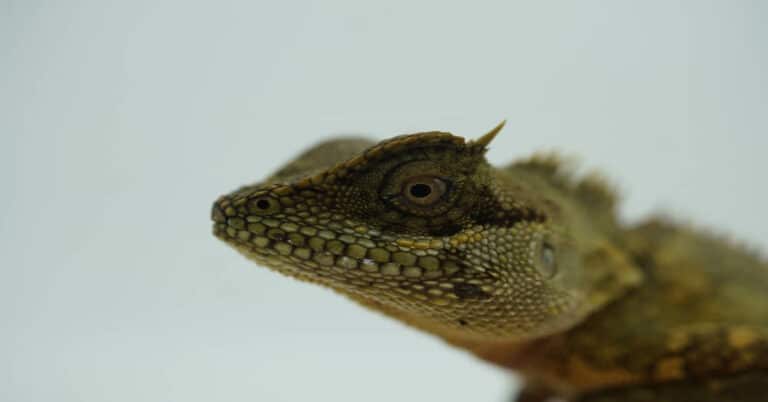Lizard Life Cycle
General Information About Lizards
Did you know that these reptile species have persisted for about 200 million years? Their characteristics depend on the species. For instance, in some species, lizards can weigh as little as 0.5 gms or as much as 150 kgs, like Komodo dragons. These reptiles live on land, mainly underground in winter, and surprisingly, they can adapt to any habitat.
They have their own unique place in nature. While some lizards serve as pest deterrents, others may be the actual pests and cause major damage. To survive, they eat prey like insects, making them primarily carnivorous. Now let’s take a look at the lizard life cycle.
Lizard Life Cycle
The lizard life cycle has a three-stage life cycle and reproduces by producing eggs. The main stages of the lizard life cycle are – The egg stage, juvenile stage, and adolescence. These developmental stages look similar to other animals’ life cycles but differ in many ways.
Egg Stage
What do you know about the lizard life cycle? There are more than 6,000 species of reptiles worldwide, and they live everywhere except Antarctica since they cannot thrive on island chains. Generally, lizards are scaly-skinned reptiles that belong to the Squamata order.
Much like all the other creatures on earth, lizards have unusual living routines that some people could find fascinating. If you wish to learn more about the life cycle of a lizard, you’re in the right place.
The first stage of the lizard life cycle is the egg stage. Different species of adult lizards lay their eggs in different patterns. Some lizard species, such as anoles, only lay one egg in a clutch, while others may only lay two eggs in a clutch. The number of eggs laid in a single attempt is referred to as the clutch size of eggs. Although a clutch of four to eight eggs may be thought of as average, huge lizards like iguanas have been known to lay as many as fifty eggs at once.
Lizard eggs have permeable, leathery shells that give them a leathery appearance. Interestingly, this allows the eggs to stretch by absorbing moisture. To keep predators away from their eggs, some mother lizards even hide them underground. The embryo inside the eggs grows during this time. Depending on the lizard species, different eggs hatch at different times.
The typical leathery and porous shell of lizard eggs allows them to expand as the embryos develop by absorbing moisture. The lizards use their caruncle-shaped egg teeth to crack the eggshell. After cracking the eggshell, the young lizards remain for 12 to 24 hours to fully absorb the leftover yolk.
After eggs are laid, some lizard species may not provide their young with the care they require. Lizard’s parents mainly don’t take care of their eggs, with some exceptions. Many species bury their eggs in holes they have dug, while others hide them in leaf litter, nooks in trees, or caverns. In contrast, some species stay with their eggs for the whole of incubation; they rarely leave the clutch to eat.
The Juvenile Stage
The next stage in the lizard life cycle is the juvenile stage. Lizards are ready to undergo development to become fully grown individuals after hatching. At this stage, young lizards are completely capable of surviving on their own. There aren’t many noticeable changes that a juvenile lizard will go through before becoming an adult, except that they get bigger as they age.
Young lizards are essentially little adults; they don’t go through any stages where they are dependent on adults, such as the larval stage. However, their body color, pattern, and specific body proportions frequently set them apart from adults. For instance, certain lizards species have larger hatchling heads than adult skulls.
In several lizard species, youngsters have tails colored differently from adults. Juveniles can quickly mimic their vivid blue, orange, or red tails when meeting a predator. As the creature ages, the lizard life cycle moves on to the next stage – Adolescence.
Adult Stage
The final stage of the lizard life cycle is the adult stage. They go through the mating process once they are completely grown. From species to species, this mating procedure differs. Males attract females during the mating process by spreading their frills. They are frequently confused with snakes because of their resemblance. However, lizards have flexible eyelids and legs, distinguishing them greatly from snakes.
The dry season provides the ideal environment for mating. As lizards mature sexually, various ornamental structures like the neck fan of the male green anole or the horns of some real chameleons develop. Their tail color also typically changes. Some lizards, like five-lined skinks, change their color as they age. This is assumed to be an adaptation that aims to optimize crypsis.
That’s how the lizard life cycle develops from egg to adolescence. However, because of all the threats in the wild world, lizards may not reach complete maturity.
How Do Lizards Adapt?
Lizards can endure any environment, even harsh climates and deep waters to adapt to various environments. One more thing that makes adaptation easy for them is that these creatures are amazingly good at defending themselves. They practice caudal autotomy, fortifying their adverse environment and defending themselves using their tail. The ability of lizards to regrow their tails is an astounding trait.
In addition to having extremely dry and scaly skin, lizards sometimes occasionally lack this skin due to a variety of circumstances.
The Average Lizard Lifespan
A lizard’s lifespan is generally no longer than 3 to 5 years. Nevertheless, lizards can live anywhere from 20 to 50 years in captivity or while being kept as pets! Even though they have a highly developed self-defense system, the habitat and living area available to a lizard significantly impacts its lifetime and often puts them in great danger. However, the development of the lizard life cycle also depends on the species.
Other than predators, lizards can be killed by environmental causes. The longevity of a lizard in the wild depends on a variety of circumstances. One of these issues is habitat loss. Habitat loss and destruction are one of the biggest dangers to amphibian and reptile species. Destroying wetlands eliminates breeding grounds for several species and starts to reduce amphibian and aquatic reptile numbers.
According to the BBC, another important reason could be climate change, which may cause death or lower the quality of many lizard species. It was shown that telomere length was significantly decreased and lizard overwinter survival was decreased after just one week of exposure to a simulated heat wave. As a result, heat waves could shorten the lizard life cycle, possibly contributing to climate change’s loss of the lizard population.
Are Lizards Dangerous?
Unless you classify amphibians as lizards, only one lizard species is genuinely harmful to humans: the Komodo dragon. These enormous reptiles have a history of attacking people and even killing them.
However, keep in mind that lizard droppings might include diseases. Since they consume mosquitoes and other blood-feeding animals, they may spread several deadly diseases. When cleaning up any discovered lizard waste, always use good hygiene.
Despite how appealing the idea might sound, many lizard species are protected, and killing them might be against the law where you live. Using a lizard killing spray or other fatal methods might injure other animals, perhaps even your pet family members.
Interesting Facts About Lizards
- Insects are a favorite diet of lizards and are their primary source of nutrition. However, their menu also consists of things like fruits and vegetables.
- The length of time a lizard can go without eating varies by species. Leopard geckos can go around a month without eating, while mature bearded dragons can go about three weeks without eating. The majority of lizards store fat and water in their tails, which aids in their survival.
- Since lizards have cold blood, the environment’s temperature and other factors can cause their body temperature to fluctuate rapidly. Lizards cannot survive for very long without sunlight.
- The capacity of lizards to change colors is one of their alluring qualities. This is why chameleons, a particular species of lizard, are so fascinating and attractive to pet owners.
- There is only one type of lizard that can swim. The Marine Galapagos Lizard swims in search of algae, which it scrapes off of rocks with its saber-toothed claws and teeth. To do that, they can even hold their breath for an hour.
Final Words – Lizard Life Cycle
As you already know, lizards are members of the reptilia family and have exciting life habits. These creatures are incredible and unique in their looks and characteristics. Now you know all about the lizard life cycle and how these species develop. Whether you are interested in mother nature or, specifically, in lizard life habits, we hope this article helped you get the information you needed.
The world is full of fascinating, unique creatures, and many things are still to be discovered.

Nato is a content writer and researcher with a background in psychology who’s eager to explore the wonders of nature. As a travel enthusiast and animal lover, she hopes to inspire others to discover and cherish the beauty and importance of the natural world.







